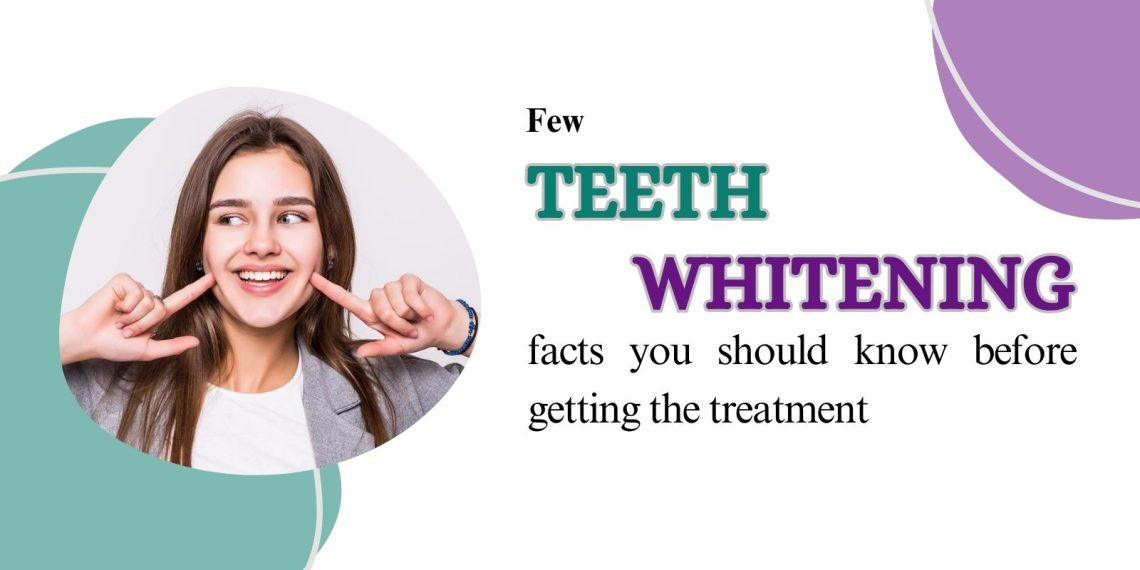Teeth-whitening is one of the most popular dental procedures in the modern times. It refers to a number of different processes that are meant to make your natural teeth look whiter and brighter. The methods used in teeth whitening include ultra violet (or UV) light therapy, bleaching, sanding down stains from teeth surface and much more. An array of teeth-whitening products is there in the market. You can also try out a number of these approaches at your own home. It is even possible to get the tooth whitened by a dentist at her office.
There can be uncomfortable side effects in some teeth whitening procedures. Most common uncomfortable side effects include sensitivity in the tooth and gum irritation. In the following sections of the post let us explore more about this universally popular cosmetic dentistry treatment.
Different types of stains in the teeth
In order to properly whiten the teeth it is important to choose aright whitening method. A correct method to whiten the teeth depends upon the kind of stain your teeth have. Some people have both intrinsic and extrinsic stains on the teeth. For these people it is important to select a whitening procedure that addresses both the types of stain without causing any unwanted side effect.
For common people it is not possible to determine the type of stain on the teeth. You need consulting a dentist for this. A dentist can not only tell you the type of stains you have but also recommends you an effective procedure that works best for you.
Intrinsic stains on the teeth
Dentists having years of experience in providing teeth whitening in Wimbledon explain stains that catch up inside the enamel layer of the tooth are called intrinsic stains. In some cases intrinsic stains develop even before the teeth erupt from the gums. In other words intrinsic stain may develop even when one is hardly an infant or a toddler.
What causes intrinsic stains?
There can be different reasons for development of intrinsic tooth stain. The reasons include the following –
- Exposure to fluoride at high levels
- Consumption of powerful antibiotic medications
- Gradually thinning enamel layer of the tooth resulting from ageing
In certain cases intrinsic stain may also be a result of genetic inheritance down the family line.
Extrinsic stains on the teeth
Extrinsic stain occurs on the outermost layer of the tooth. The factors that usually contribute to this type of stain include – excessive indulgence to popular beverages like coffee, red wine, habitual and excessive smoking, use of artificial colourings in food and others. Even certain antibiotics may contribute with this kind of stain on your teeth.
Options to whiten your teeth
There is a wide range of options available to whiten the teeth. Your options range from using specially formulated toothpastes with active (or whitening) ingredients to professional teeth whitening sessions conducted under the guidance of your dentist.
Some of these products simply remove extrinsic stains from the teeth surface. The other products just bleach both intrinsic and extrinsic stains explain dentists working at one of the best teeth whitening places near me in London. As a result the stains appear lighter on the teeth.
You can also try out a number of these approaches at your home. It is even possible to get the tooth whitened by a dentist at his or her office. This substance helps breaking down as well as minimising stains on your teeth. Products used in many in-office or in-chair treatment options also contain hydrogen peroxide. Other than hydrogen peroxide another substance that is also used an oxidising ingredient is carbamide peroxide.
These substances, rather chemicals may prove to be aggressive. If used in higher dosage these substances may even cause irritation. It is crucial to use this range of teeth whitening products as per the directions printed on the label or given by your dentist.
After using any such product at home if you experience sensitivity in the teeth then you must report that to your dentist. The same goes for receiving the treatment at your dentist’s office. Unwanted side effects of these products may also include redness in the gums, bleeding gums and pain in the tooth. If you experience any of these symptoms just stop using the product and visit your dentist suggest experts working in a renowned teeth whitening clinic near me.
The range of whitening products
Whitening products that are available over the counter include toothpastes and mouthwashes. A section of these products contains baking soda. It acts as an abrasive and scrubs your stain away. Another section of these products contains charcoal. Charcoal is used for its abrasive property. low percentage of hydrogen peroxide or hydrogen carbamide is also found in these teeth whitening formulae.
Some of the abrasive substances can damage the outermost enamel coating of the tooth. The enamel, unlike the other parts of the tooth, is not made of living cells. Thus it cannot repair and rejuvenate itself on its own after sustaining wear and tear. The British Dental Association or BDA suggests you must consult your dentist about using these abrasive teeth whitening products. These experts can guide you on how to use these products safely.
Other than active ingredients and scrubbing agents, teeth whitening products also contain fluoride. It reinforces the enamel of the tooth in one hand, while on the other prevents stains in future.
Your home whitening kits
Home whitening kits come in a range of options. These include gels, pastes and sticky strips. The sticky strips are applied to the teeth directly whereas both gels and pastes are applied using a brush explain trained dental professionals who provide teeth whitening near me over the years.
Side effects of teeth whitening
Teeth sensitivity is the most common side effect of teeth whitening treatment. Most of the cases of this side effect are thankfully temporary. Irritation in the gum tissues as well as in the mouth is common too. This reaction is mostly caused by the presence of hydrogen peroxide in the whitening product.
Top 5 Tips for Keeping a Good Mouth during Invisalign Treatment
While getting the teeth whitened at a dentist’s office you will notice that the tissues of your gums are always protected during the treatment. This is done to reduce this particular side effect. Whitening products that are used in in-office or in-chair teeth whitening treatments contain high proportion of hydrogen peroxide. Thus this precaution becomes necessary for patients.
Dentists working at the famous SW19 Confidental Dental clinic have something to add in the ongoing context. According to them repeatedly using Professional Teeth whitening Wimbledon kits can bring permanent damage to your teeth. Even you should not use these kits longer than the recommended duration for the same reason, they warn.





